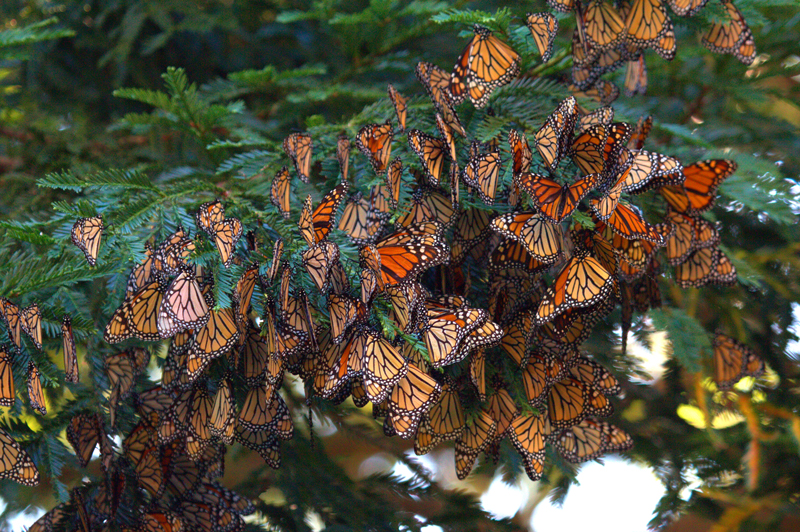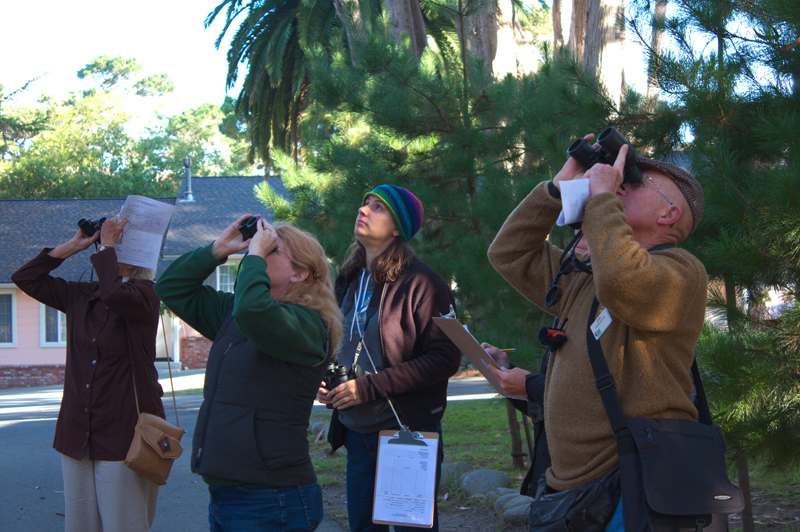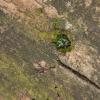It was in 1976, at the World Congress of Entomology, held in Washington. D.C., when the North American migratory monarchs were named the number one priority in world butterfly conservation. The Mexican overwintering grounds had just been located the year before, one of the greatest natural history developments of the twentieth century, and a whole suite of threats to them was obvious right off the bat. Meanwhile, attention to the westernmost monarchs that winter in California was growing, along with an awareness of risks for their long-term well-being. The Lepidoptera Specialist Group of IUCN’s Species Survival Commission held its first meeting at the WWF-US headquarters in D.C., with delegates from several member countries present. Our discussions came around to the exciting news of the monarch discovery and the potential dangers to the entire migratory system, and the Group took the dramatic step of designating monarchs to be their first order of business on a worldwide basis. This decision initiated many years of involvement in monarch conservation by the Xerces Society and the World Wildlife Fund. (At the time, I chaired the Lepidoptera Specialist Group; that body is now called the Butterfly Specialist Group, and its current chair is Xerces' Executive Director Scott Hoffman Black).
Five years later, in 1981, the Xerces Society cosponsored the first conference on Monarch Conservation and Biology (MonCon I) in Cocyoyoc (in the Mexican state of Morelos), with the Lepidopterists’ Society and La Sociedad Mexicana de Lepidopterología. Soon thereafter, IUCN and WWF codified the designation of the North American migratory monarchs as a Threatened Phenomenon — a new category introduced in the Invertebrate Red Data Book (S. M. Wells, R. M. Pyle, N.M. Collins, eds., 1983). The idea of endangered phenomena, with the migrant Danaus plexippus populations as a prime example, had independently arisen with Professor Lincoln Brower of the University of Florida.

In 1985, the Xerces Society hired its first employee, Melody Mackey Allen, to pursue monarch conservation and fundraising. Then in 1986, MonCon II took place in Los Angeles. Soon thereafter, Xerces launched the Monarch Project as a medium of partnership with Mexican and Californian conservation groups, agencies, and individuals on behalf of monarchs and their habitat. Allen served as director, Brower was the scientific director, and I the chairman. We worked with anyone we could find to raise the profile of monarchs and influence early steps for their protection — from Cuauhtémoc Cárdenas, then Governor of the Mexican state of Michoacán, to a number of Californians involved in monarch tagging and habitat monitoring in Pacific Grove and beyond.
By now, many parties were becoming involved with California monarchs, risks had intensified from development, and the situation was complicated. Xerces hosted a monarch summit of many of these parties (the first of several that would follow) at the Esalen Institute in the autumn of 1990. One of the clear priorities that came out of this confab was the need for a centralized data bank for monarch overwintering site occurrences, and an ongoing effort at monitoring the numbers of monarchs occupying each autumn and winter site. For as we all know, you cannot conserve something if you don’t know where it occurs; and you cannot measure the success of conservation efforts (or the degree of threat) without a clear idea of the organism’s numbers, whether going up or down, or remaining stable. At that time, there were several different monarch tagging and counting endeavors going on in California, with little cooperation or coordination, and the data they generated were neither collated in one place nor readily available. Thus was the ground laid for the annual Thanksgiving counts.

One of the conservationists present at the Esalen meeting was Mia Monroe, a National Park Service ranger at Muir Woods National Monument, who was devoted to monarchs and the furtherance of their wonderful migratory cycle. Perhaps inspired by Xerces’ (now NABA’s) Fourth of July Butterfly Counts, Mia founded the Thanksgiving Counts of monarchs in 1997.
Mia saw the Western Monarch Thanksgiving Count as formalizing what David Marriott and Walt Sakai were informally doing as a “good practice,” letting us know numbers and trends in the Monarch Program’s newsletter. In years since, she has coordinated the WMTC and made it bigger and more inclusive each year. While many people have been and remain involved, it is Mia who emerged as the person able to bring everyone together to make the Thanksgiving Counts work in the long term.
Now we find ourselves forty years from that first, historic decision in the nation’s capital to name monarchs number one on the world butterfly conservation scene, and half that long since the Thanksgiving counts began. That makes western monarch monitoring one of the senior invertebrate conservation undertakings in the country, and demonstrates WMTC as the solid presence on the wildlife conservation scene that it is today.
If we continue to enjoy the coming and going and massing of our westernmost migratory monarchs as the grand emanation of nature that they are, it will in no small way be thanks to all who have participated in the counts, and continue to devote their time, energy, and commitment to this annual Rite of Autumn—and what could be more expressive of our thanksgiving for the kindly fruits of the Earth than that?




